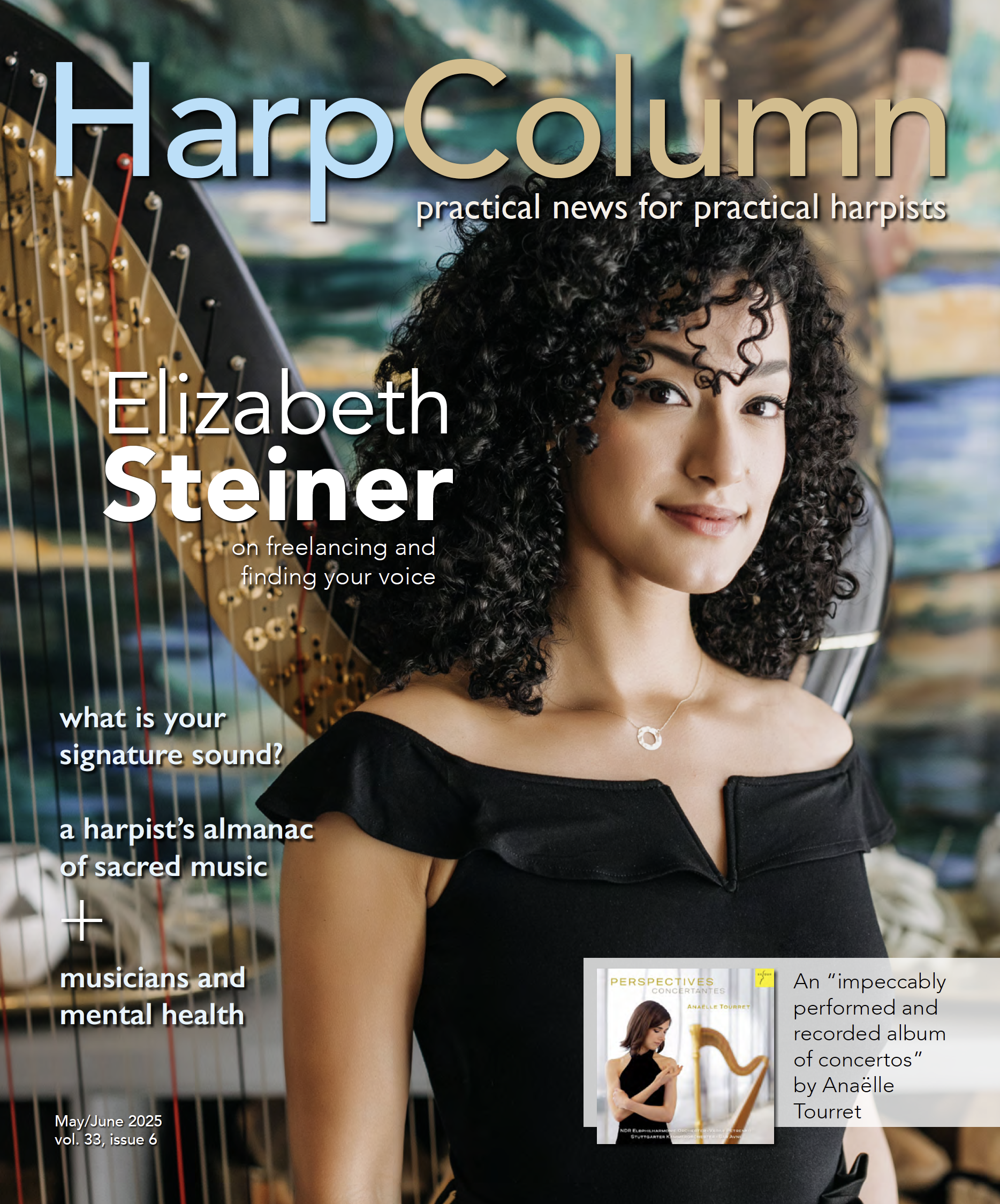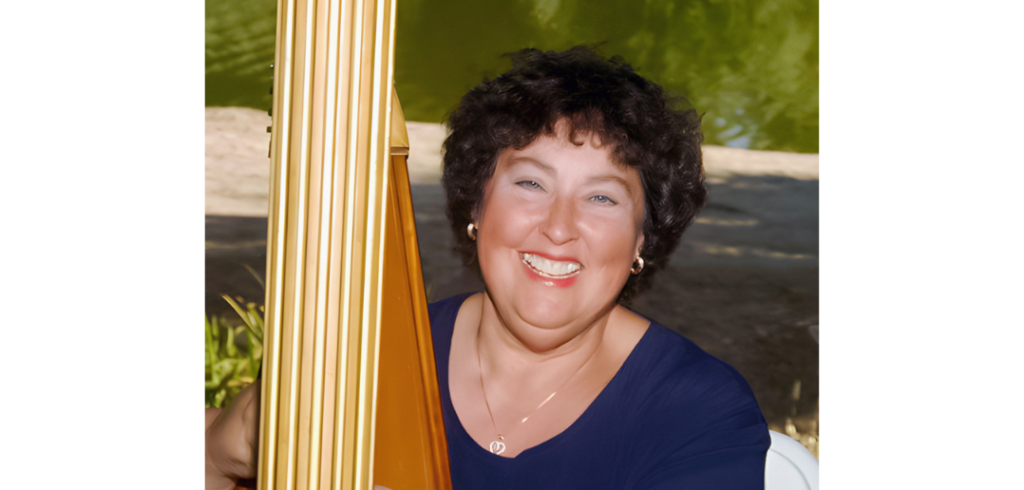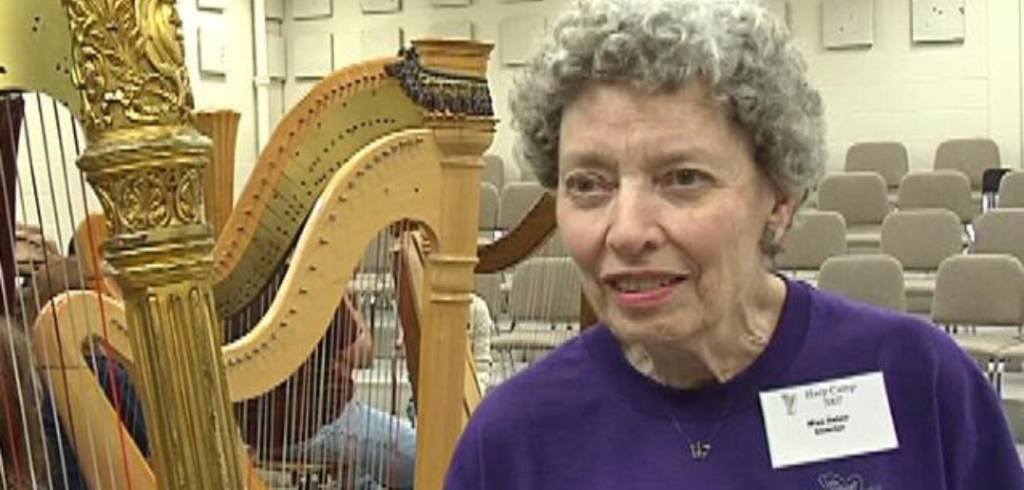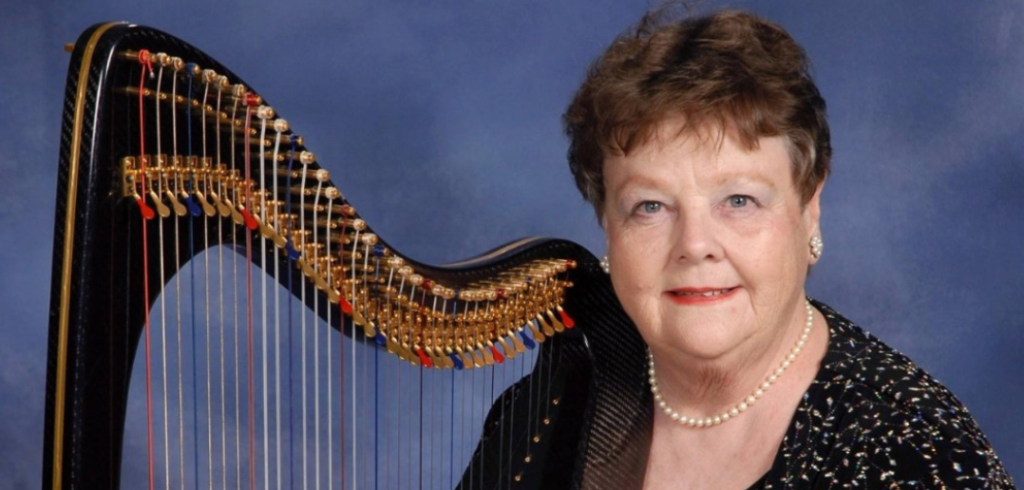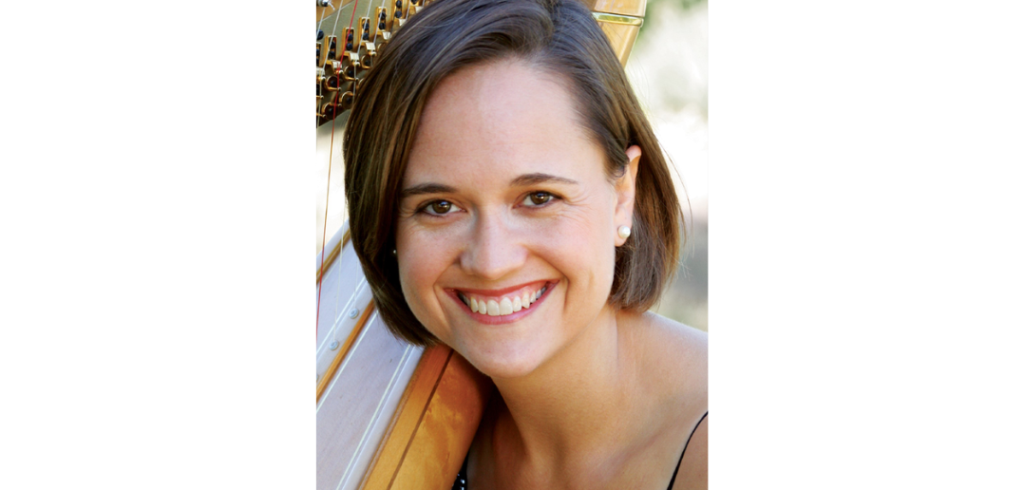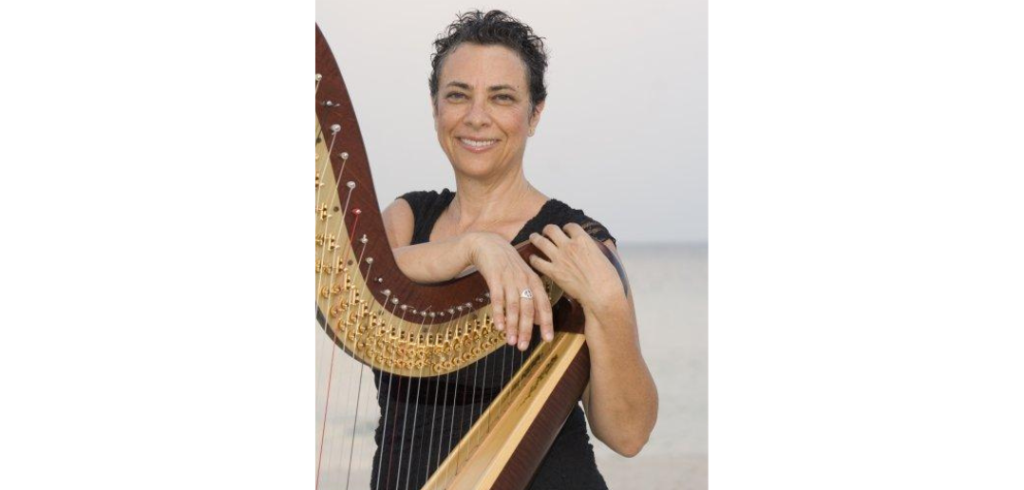With her husband and children by her side, Ruth Anne Myers-Brown passed away on July 20, 2024, in Victoria, B.C., after a long illness. Growing up in a musical family, Ruth played piano and bassoon, then, while at summer music camp in 1969, she fell in love with the harp. She studied harp in high school, as well as college at Eastern Michigan University with Professor Jill Bailiff Reyes, earning her bachelor’s degree cum laude. Her summer studies included The Tanglewood Institute, Chautauqua, Interlochen, and the noted Salzedo Harp Colony in Camden, Maine, where she worked with Alice Chalifoux. She earned the Master of Music in harp performance from Boston University’s School of Fine Arts as a student of world-renowned harpist and teacher Lucile Lawrence.
Ruth next launched her performing and teaching career, joining the EMU music faculty in 1984. She performed extensively across Michigan (and beyond) with the Birmingham-Bloomfield, Warren, Dearborn, Lansing, Kalamazoo, and Plymouth Symphonies; Michigan Opera Theater; Detroit Symphony during their Northern Michigan tour; the Kalamazoo Bach Festival; and as a soloist for the American Harp Society National Conference. She also appeared regularly in chamber concerts and as a freelance artist. Her services were requested for special occasions by such luminaries as Mike Ilitch, Jacques Nasser, Frank Sinatra, and Aretha Franklin.
Myers also maintained an extensive private studio. Twice nominated by the Michigan String Teachers Association (MASTA) as Teacher of the Year, she often served as clinician and adjudicator, including for MASTA and at Western Michigan University. She was an invited clinician at Tanglewood, as well as Ball State, Wayne State, and Michigan State Universities. Additionally, she taught on the faculty of Blue Lake Fine Arts Camp.
—excerpt from obituary published in The Ann Arbor News
To say that Ruth Myers was my first harp teacher would be to describe only a tiny fraction of the impact she had on my life. She never really had “off” hours when it came to those fortunate enough to study with her. Lessons ran into overtime more often than not, and she was always thinking about what we should play next or what the next challenging performance opportunity should be. She always seemed to know exactly what we needed to get to the next level, in my case giving no quarter to my perpetual protests of “this is too hard!” It was not uncommon for her to call mid-week to check in with my parents and make sure I was keeping up my end of the bargain by practicing as I had promised I would.
Ruth was never content to limit her instruction to the harp alone, instead instilling in her students her same passion for great theater, film, dance, literature, and art. She was the kind of teacher who cared deeply for each and every student, well past their time in her studio. Many of those in attendance at her memorial in September were her students in the ’80s and ’90s, still in touch with Ruth and her family all these years later.
One of the greatest lessons Ruth taught those around her was the fearlessness with which she faced her terminal diagnosis. She immediately embarked on a series of travels all over the world, determined to visit as many states and countries as she could in the time she had. In quintessential Ruth fashion, she was on a whale-watching trip in Victoria, British Columbia, at the time of her death. Until the end, she continued teaching and supporting her students, attending performances of all kinds, and making sure her beloved harps and music went to loving homes. I will forever cherish the memory of her visit to Houston with her dear husband, Carter, less than three months before she passed. She was in the audience one last time to hear me play as the Houston Symphony Orchestra performed Pines of Rome—a harp part she had taught me some 20 years earlier.
All young harpists should be so lucky as to have a musical mentor like Ruth. She truly was a second mother to me and to so many of her students, and I miss her every day.
—Allegra Lilly




